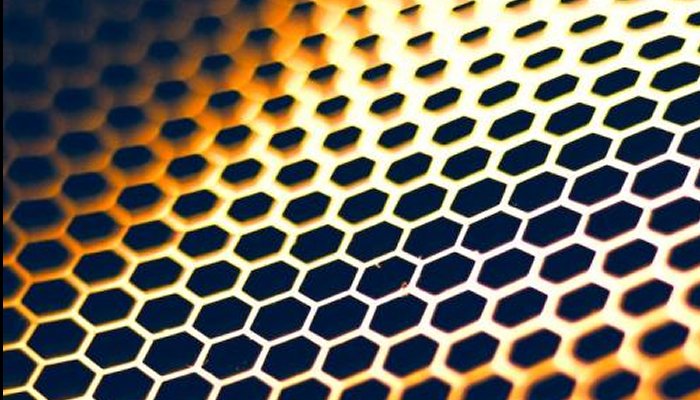Electrons In A Strange Metal World – Research
Eddie Gonzales Jr. – MessageToEagle.com – Imagine a flock of birds as they wheel across the sky: surging into a mass, flowing into ribbons that twist and turn again into fantastic shapes. If you follow one bird within the flock, you can describe its actions, the way it flaps its wings or uses its tail to brake.
Yet, even if you could minutely account for the behavior of each individual bird, the shapes and patterns of their collective flight would still evade understanding.
Electrons don’t flock like birds. But Debanjan Chowdhury, assistant professor of physics, faces a similar challenge when trying to describe how electrons behave in quantum materials.
For decades, scientists have been studying electrons by looking at common materials like silicon and observing one electron at a time. “Despite the complexity of electrons in silicon, we can effectively describe the material’s measurable properties by focusing on each individual electron as if the others don’t exist,” Chowdhury says.
But lately, scientists have been excited by so-called quantum materials, in which trillions of electrons interact and influence each other—behavior that is evident in high-temperature superconductors. “These new materials exhibit counterintuitive properties that can’t be described by treating these electrons one at a time,” Chowdhury says. “Instead, we have to treat the electrons in these materials as one collective fluid in which electrons are strongly entangled with one another. We don’t even have the right kinds of technical tools and mathematical machinery to describe their properties reliably yet.”
For Chowdhury, who is a theoretical physicist, quantum materials are at once puzzles and pathways to innovation. “These materials are exciting,” he says. “They hold a lot of promise to further our basic understanding of quantum mechanics as it applies to trillions of interacting electrons. They also could potentially drive the next generation of quantum technologies.”
High-temperature superconductors
As an electric current flows through a normal conductor, such as copper at room temperature, microscopic interactions between the conductor and the flowing electrons create resistance. Much like mechanical friction, that resistance dissipates some of the electric current’s energy in the form of heat.
By contrast, superconductors carry an electric current without the slightest loss of energy.
When superconductivity was discovered in 1911, it was observed only at temperatures near absolute zero (-273.15°C), which was a barrier to harnessing its lossless flow of energy for everyday applications. In the 1980s, however, scientists began discovering materials with a temperature threshold for superconductivity that is much higher—as high as -100°C. That’s extremely cold, but it’s a temperature that can be maintained using liquid nitrogen, making high-temperature superconductors far better candidates for practical applications.
Understanding the quantum phenomena that govern the flow of electrons in high-temperature superconductors could have incredible technological and even planetary implications, Chowdhury explains. As an example, he mentions power plants. Roughly 65% of the electricity that power plants generate is lost during transmission. By eliminating these losses, high-temperature superconductors could drastically reduce the carbon footprint of electricity production.
Yet numerous high-temperature superconductors belong to a broader class of materials called strange metals that continue to defy explanation. They are strange in ways never before observed—and not only in terms of their superconductivity.
At different temperatures, very different properties
Before the discovery of strange metals, observations generally confirmed that dissipation in a typical conductor increases as the temperature increases, but only to a point. Beyond that point, you can increase the temperature of the system without degrading the material’s conductivity. Increase the temperature of copper from -150°C to -10°C or even 39°C on a hot summer’s day, and you still have a perfectly good conductor.
When it comes to strange metals, however, there’s no cap on their dissipation. Instead, their conductivity continues to degrade as temperatures rise. “You would think that… a material that can superconduct at temperatures near or below -100°C would be a very good electrical conductor at room temperature, similar to copper or silver,” Chowdhury says. “Instead, these strange metals are terrible conductors under normal conditions.”
Universality in strange metals
The electrons in any material are colliding constantly. As the temperature of a system drops, the electrons slow down and the time between collisions increases.
For strange metals at low temperatures, however, the interval between successive collisions is unusually short. And the strangeness doesn’t stop there, Chowdhury says. The interval is precisely determined by the temperature of the system and Planck’s constant, a fundamental constant of nature. This behavior holds true regardless of the strange metal’s chemical makeup and regardless of the threshold temperature at which its superconductive powers emerge.
“Physicists get excited any time we see the emergence of universality, because it means that the complicated microscopic details tied to a particular material do not impinge upon the common features shared by all of the distinct compounds,” Chowdhury says. “We can hope to come up with a theoretical explanation that works for all these compounds.”
Chowdhury is investigating the origin of this universal time scale across disparate superconducting compounds. “This timing of electron collisions tells us that quantum mechanics is fundamentally important in understanding the basic physics that controls how the electronic fluid carries current in these strange metals,” he says. “The fundamental reason behind this universal time scale is likely also responsible for driving high-temperature superconductivity.”
To explain the timing of electron collisions in strange metals, Chowdhury tries to write the simplest of quantum field theories that would describe the properties of the interacting particles. “I try to build a minimal mathematical model for what the electrons might be doing,” he says. “I try to come up with interesting ways to solve the puzzle using techniques and ideas inspired by developments across different subfields of physics, sometimes including even quantum information and black holes.”
Moiré materials
In a distinct but related area, the Chowdhury group is collaborating with experimental physicists to explore the physics of moiré materials, a new class of materials discovered in 2018 by Pablo Jarillo-Herrero and collaborators at the Massachusetts Institute of Technology. Members of Jarillo-Herrero’s lab put two sheets of graphene, each made up of a single atomic layer of carbon atoms, on top of each other. The research team then twisted one sheet 1.1 degrees relative to the other. The resulting system—called a moiré material because the two slightly offset sheets create a moiré pattern—hosted new and unanticipated phenomena, including superconductivity.
“There are a lot of other two-dimensional materials where you can play the same game,” Chowdhury says. “The amazing thing about moiré materials is that the two sheets don’t have to be made of the same material. By stacking and twisting a variety of different sheets, you have the ability to externally control the electrons’ kinetic energy—how fast they effectively move in the system—in opposition to how strongly they interact with each other. For instance, one point one degree of twist in graphene is the sweet spot where the electrons almost come to a standstill due to subtle quantum mechanical effects.”
In general, superconductivity arises when two electrons come together, form what is called a Cooper pair, and then start moving with a finite kinetic energy.
“So, if the electrons in two graphene sheets with 1.1 degree twist have almost no kinetic energy, how can pairs of electrons move?” Chowdhury asks. “The answer lies in topological properties [properties preserved through deformations, twisting, and stretching of objects] that are associated with the quantum mechanical wave function of the electron, combined with strong electron-electron interaction. This combination of topological properties and strongly entangled electrons provides a fundamentally new route towards engineering higher temperature superconductors.”
Pushing the limits of imagination
When he’s not thinking about existing and ongoing experiments, Chowdhury likes to imagine interesting quantum effects that are theoretically possible even if they lie beyond the reach of existing measurements. “I push the limits of my imagination by asking, “If we don’t violate any fundamental laws of nature, and we focus on the uncharted world of entangled electrons, what else can happen? And how would we detect something like that?'” he says.
“The quantum world is fascinating, and we understand so little about it that I’m driven to make fundamental, conceptual advancements in the theory of interacting electrons,” he continues. “There’s an endless list of completely new phenomena no one has ever thought about that are waiting to be discovered.”
Written by Eddie Gonzales Jr. – MessageToEagle.com Staff
Related Posts
-
 Researchers Can Create Upward Fountains On The Water’s Surface
No Comments | Jan 19, 2022
Researchers Can Create Upward Fountains On The Water’s Surface
No Comments | Jan 19, 2022 -
 50-Year-Old Lightning Mystery Solved By Physicists
No Comments | Nov 29, 2022
50-Year-Old Lightning Mystery Solved By Physicists
No Comments | Nov 29, 2022 -
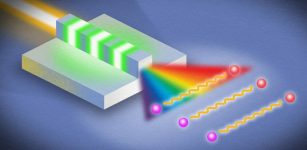 Researchers Set ‘Ultrabroadband’ Record With Entangled Photons
No Comments | Oct 30, 2021
Researchers Set ‘Ultrabroadband’ Record With Entangled Photons
No Comments | Oct 30, 2021 -
 Scientists Can Now Control The Speed Of Light And Send It Backward – Major Breakthrough!
No Comments | Apr 8, 2019
Scientists Can Now Control The Speed Of Light And Send It Backward – Major Breakthrough!
No Comments | Apr 8, 2019 -
 Studying Cosmic Expansion Using Methods From Many-Body Physics
No Comments | Dec 7, 2021
Studying Cosmic Expansion Using Methods From Many-Body Physics
No Comments | Dec 7, 2021 -
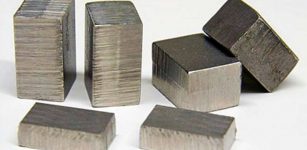 Some Alloys Don’t Change Size When Heated, And We Now Know Why
No Comments | Jul 30, 2023
Some Alloys Don’t Change Size When Heated, And We Now Know Why
No Comments | Jul 30, 2023 -
 New Algorithm Could Be Quantum Leap In Search For Gravitational Waves
No Comments | Apr 4, 2022
New Algorithm Could Be Quantum Leap In Search For Gravitational Waves
No Comments | Apr 4, 2022 -
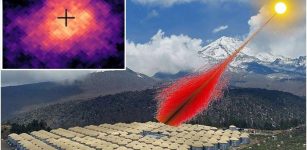 Surprising Discovery: The Highest-Energy Light Coming From The Sun
No Comments | Aug 7, 2023
Surprising Discovery: The Highest-Energy Light Coming From The Sun
No Comments | Aug 7, 2023 -
 Ultraprecise Atomic Clock Poised For New Physics Discoveries
No Comments | Feb 21, 2022
Ultraprecise Atomic Clock Poised For New Physics Discoveries
No Comments | Feb 21, 2022 -
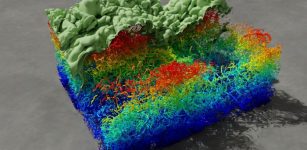 Powerful Simulation Solves Vital Physics Problem
No Comments | Sep 21, 2022
Powerful Simulation Solves Vital Physics Problem
No Comments | Sep 21, 2022

